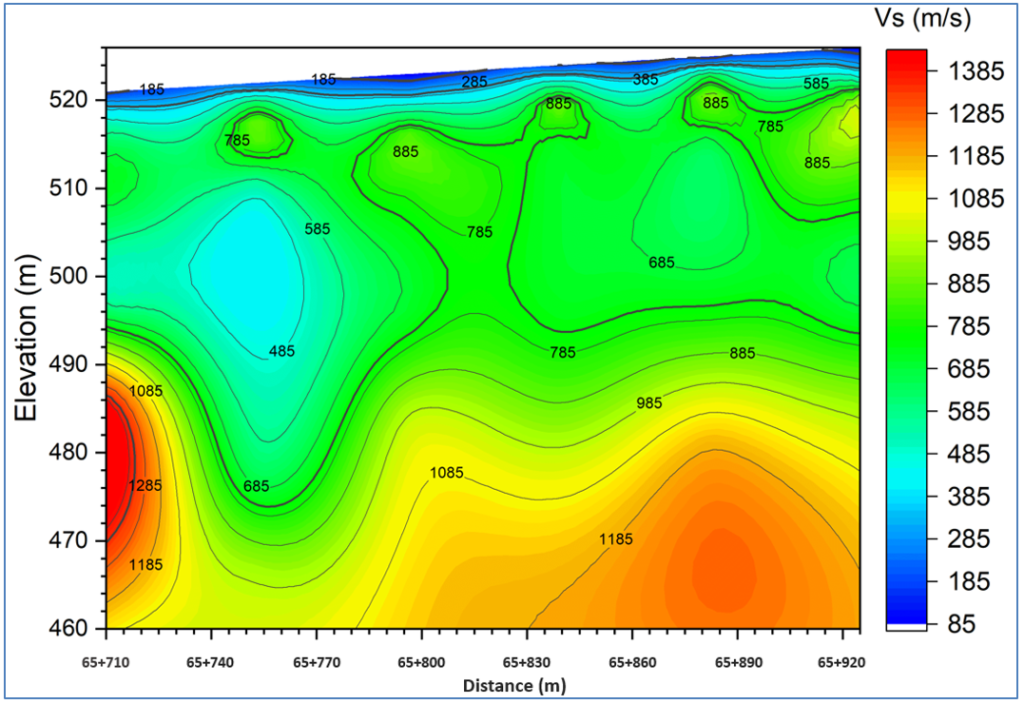Multi Channel Analysis of Surface Waves - (MASW) Survey in India

The multi channel analysis of surface wave (MASW) method, a powerful geophysical exploration technique has been used increasingly since 1980 in applications shallower than 30-50 m depth. The MASW method provides the velocity of S-waves in subsurface materials. The S-wave velocity is a good indicator of the shear property of soil or rock for evaluating the elastic condition (stiffness) of the ground for geotechnical engineering purposes.
The MASW method (Multi Channel Analysis Of Surface Waves) is a non-invasive technique which allows determining the shear wave velocity (S wave) profile of the ground, by measuring the wave motion on the free surface of the ground. The main contribution to the superficial wave motion is given by the Rayleigh waves, which travel at a speed that is correlated to the stiffness of the soil region where propagation occurs. In a layered half space medium, Rayleigh waves are dispersive, that is, waves with different wavelength travel with different speeds both phase and group velocities. Vs30 is the shear-wave velocity averaged and computed.
The MASW method can be distinguished into active MASW method and passive MASW method or a combination of both methods can be used. In the active MASW method the superficial waves generated at a point on the free surface of the ground are measured along a linear array of receivers. Generally, the active method allows to measure an apparent dispersion curve (or phase velocity) within the frequency range 3 Hz – 70 Hz. In the following discussions, reference will be made to only the active MASW method, which allows determining the seismic class of the site.


Gaveshna Geosciences Private Limited (GGPL) Company offers expert Multi Channel Analysis of Surface Waves – (MASW) Survey in India. Ensure accurate subsurface insights with our advanced MASW technology. Contact Us Company today and check our other Services
